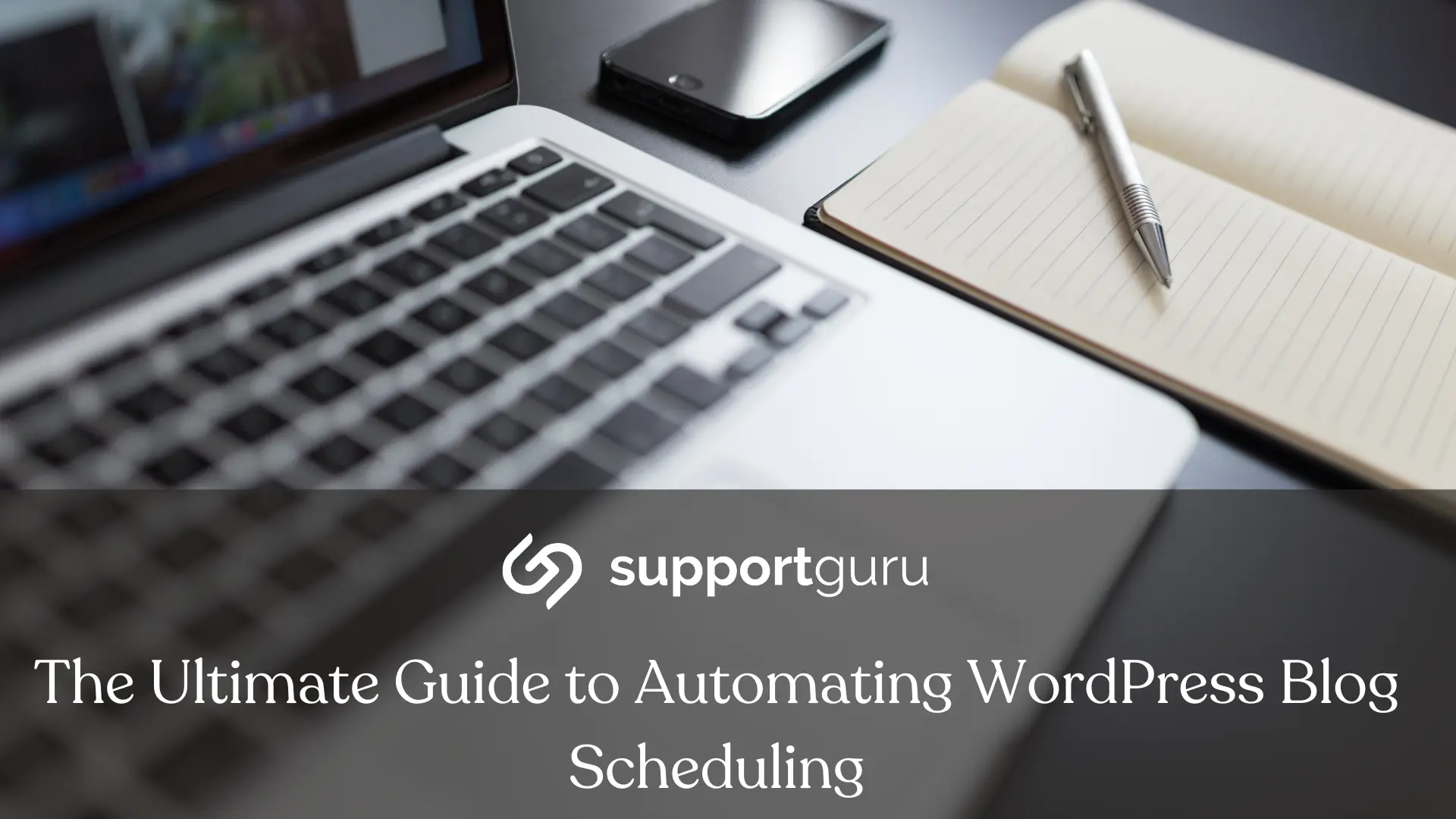Are you tired of manually scheduling your WordPress blog posts? Are you looking for ways to increase your productivity and focus on creating quality content?
With the right strategies and tools, you can save time and effort by automating the process of scheduling your blog posts. We will provide step-by-step instructions on how to set up automated scheduling using popular WordPress plugins and other helpful tools.
By automating blog scheduling, you can ensure a consistent publishing schedule, even when you are away or unable to manually publish your posts. This allows you to focus more on creating valuable content and engaging with your audience.
Whether you are a beginner or an experienced blogger, this guide will provide you with the knowledge and resources to streamline your blog scheduling and increase your productivity.
Say goodbye to manual scheduling and start automating your WordPress blog posts today!
Benefits of Automating WordPress Blog Scheduling
Increased Productivity: Time saved is productivity gained. Use those reclaimed hours to brainstorm killer content ideas, craft magnetic headlines, or finally tackle that never-ending to-do list.
Automation becomes your productivity superpower, amplifying your output without sacrificing quality.
Enhanced SEO Magic: Search engines love predictability. Automated scheduling guarantees your content hits the web regularly, boosting your site's visibility and ranking in those coveted SERPs.
Peace of Mind Publishing: Breathe a sigh of relief. Scheduling eliminates the stress of forgetting to publish or missing deadlines. Automation becomes your safety net, ensuring your content goes live even if you're scaling a mountain or lost in a good book.
How to Choose the Right WordPress Scheduling Plugin
Know Your Needs: Do you need a simple timer or a multi-tool powerhouse? Popular plugins like Editorial Calendar, WP Scheduled Posts Pro, and PublishToSchedule offer varying levels of control and additional features like social media integration, email notifications, and content analysis.
Choose the one that aligns with your workflow and ambition, like picking the perfect tool for the job.
User-Friendly Interface: Navigating your scheduling plugin should be a breeze, not a brain-busting puzzle. Prioritize plugins with intuitive interfaces, clear menus, and helpful documentation.
Community and Support: A robust community and responsive support team are your safety nets when things get technical. Choose a plugin with a thriving community or reliable support channels to ensure you're never left hanging when troubleshooting.
Setting Up Your WordPress Scheduling Plugin
Popular plugins like Editorial Calendar and WP Scheduled Posts Pro offer varying levels of control and features.
Choose the one that fits your workflow, then follow these bite-sized steps:
- Plugin Activation
Navigate to the "Plugins" tab in your WordPress dashboard, upload your chosen plugin, and activate it.
- Settings Configuration
Explore the plugin's settings to familiarize yourself with its features and functions. Customize publishing options, time zones, and notification preferences.
- Scheduling Your First Post
Choose a post or draft, click "Schedule," and select your desired date and time. Don't forget to preview your scheduling confirmation!
- Beyond Simple Scheduling
Set recurring schedules for entire categories, explore social media integration to amplify your reach, and even schedule email marketing campaigns to capture reader information seamlessly.
Automating Social Media Sharing
Integrate your blog with social media scheduling tools like Buffer and Hootsuite. Schedule social media posts alongside your blog updates, automating cross-platform promotion and maximizing audience engagement.
Triggers automatically share your blog posts on Facebook, Twitter, LinkedIn, and beyond, sparking conversation and amplifying your reach while you focus on creating the next content masterpiece.
Integrating Email Marketing With WordPress Scheduling
Platforms like Mailchimp and ConvertKit effortlessly connect with your scheduling plugin, automatically capturing reader information and building your email list right from your publishing workflow.
Your published post triggering a personalized welcome series for new subscribers, introducing them to your brand and providing valuable content to keep them engaged.
This automated nurturing process fosters connection, builds a community around your expertise, and turbocharges your email marketing efforts.
Tracking and Analyzing the Results of Automated Scheduling
Track key metrics like blog engagement, website traffic, and social media interaction to understand what resonates with your audience. Tools like Google Analytics and social media insights dashboards provide valuable data points.
Analyze engagement patterns, see which content formats perform best, and identify optimal posting times across platforms. Look for correlations and trends to uncover hidden gems that can improve your strategy significantly.
Use data-driven insights to run A/B tests on different post types, headlines, call-to-actions, and social media approaches. See what statistically leads to higher engagement and optimize your content accordingly.
How to Auto-Schedule Your WordPress Blogs
This efficient approach liberates valuable time for strategic brainstorming, SEO-driven consistency, and fostering deeper audience engagement – all while operating on autopilot.
Find the ideal plugin tailored to your specific needs and desired level of control, configure it with ease, and schedule posts like a seasoned professional.
Extend your reach and cultivate a thriving community by leveraging automated social media sharing and seamless email list integration.
Analyze performance metrics, refine your strategy with data-driven insights, and witness your content ascend to new heights.
